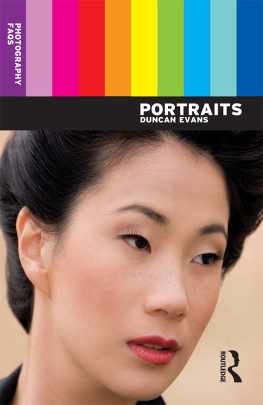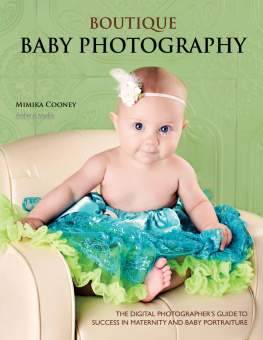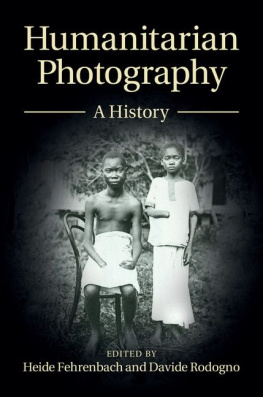PORTRAITURE & PHOTOGRAPHY IN
AFRICA
PORTRAITURE & PHOTOGRAPHY IN
AFRICA
EDITED BY
John Peffer and
Elisabeth L. Cameron

AFRICAN EXPRESSIVE CULTURES
Patrick McNaughton, editor
Associate editors
Catherine M. Cole
Barbara G. Hoffman
Eileen Julien
Kassim Kon
D. A. Masolo
Elisha Renne
Zo Strother
This book is a publication of
Indiana University Press
Office of Scholarly Publishing
Herman B Wells Library 350
1320 East 10th Street
Bloomington, Indiana 47405 USA
iupress.indiana.edu
Telephone orders 800-842-6796
Fax orders 812-855-7931
2013 by Indiana University Press
All rights reserved
No part of this book may be reproduced or utilized in any form or by any means, electronic or mechanical, including photocopying and recording, or by any information storage and retrieval system, without permission in writing from the publisher. The Association of American University Presses Resolution on Permissions constitutes the only exception to this prohibition.
This book is printed on acid-free paper.
Manufactured in South Korea
Library of Congress Cataloging-in-Publication Data
Portraiture and photography in Africa / edited by John Peffer and Elisabeth L. Cameron.
pages cm. (African expressive cultures)
Some essays originally presented at the conference Portrait Photography in African Worlds (February 34, 2006), University of California, Santa Cruz.
Includes bibliographical references and index.
ISBN 978-0-253-00860-2 (pbk.) ISBN 978-0-253-00872-5 (e-book) 1. AfricansPortraits. 2. Portrait photographySocial aspectsAfrica. I. Peffer, John, editor of compilation. II. Cameron, Elisabeth Lynn, editor of compilation.
TR681.A33P67 2013
770.96dc23
2012047537
1 2 3 4 5 18 17 16 15 14 13

With gratitude to
Patricia and Rowland Rebele and Raoul Birnbaum
CONTENTS
\ Raoul Birnbaum
JOHN PEFFER
JRG SCHNEIDER
ERIN HANEY
RIKA NIMIS
ELISABETH L. CAMERON
Z. S. STROTHER
CHRISTRAUD M. GEARY
ISOLDE BRIELMAIER
LIAM BUCKLEY
JEAN BORGATTI
ROWLAND AB DN
DN
CANDACE M. KELLER
TILL FRSTER
FOREWORD
RAOUL BIRNBAUM
Perhaps counterintuitively, this book has its origins in a six-year project on Chinese biographies/autobiographies and portraits/self-portraits that I led while serving as Patricia and Rowland Rebele Endowed Chair in the History of Art and Visual Culture at the University of California, Santa Cruz. It seemed to me that many of the issues I encountered as I engaged with Chinese photographic traditions might be constructively pursued with African materials as well, or set against those traditions to create a productive tension. To this end, Elisabeth Cameron, a valued department colleague, generously agreed to co-organize a conference on portrait photography in Africa. We were fortunate also that John Peffer was able to spend a year with us teaching at UCSC; Elisabeth and John were responsible for selecting and inviting the many Africanists who joined us in Santa Cruz for the conference in February 2006. Although we had expected to divide the volumes editorial work among the three of us, and I also planned to write a more formal research paper based on my conference presentation, illness required that I step back from the scene. I am glad now to be able to return with this brief foreword. Elisabeth and John deserve extraordinary credit, as well as my very considerable appreciation, for doing far more work than reasonably anticipated in order to see the volume through to publication. It also is a great pleasure to recognize with gratitude that the long-term project, including this segment, was made possible by the kind generosity of Patricia and Rowland Rebele, who created the endowed chair in our department.
A few words on portraiture and portrait photography in China may provide a sense of some of the issues animating the organization of the conference, which was the starting point for this volume.
Until recently, the vast bulk of portraiture in China was created specifically for memorial purposes. Many of these portrait paintings were created by local specialists after the death of the subject; sometimes it was simply a matter of filling in the facial features of the specific individual to complete a prepainted design. That face often was produced according to descriptions given by family members (sometimes using the Chinese craftsmans equivalent of the identikit commonly used by U.S. police departments to construct drawings of crime suspects). Representations in some cases were formulaic, but the likenesses were considered sufficient for ritual purposes. The introduction of photographic technologies, and increasing access to them in urban areas by the last quarter of the nineteenth century, made accurate representations possible, and so these images produced by new technologies rapidly became favored for this very traditional function. Photography also created a new range of possibilities for the relatively easy production of family pictures, records of public gatherings, and the like. Importantly, photographic technologies provided new opportunities for self-examination of stable representations of ones own image. Such portrait photographs became significant objects of exchange as well.
There is much that could be said about the immense changes in the production and dissemination of photographic imageslargely portraiture, of one kind or anotherthat have occurred over these past few decades in China (and in many other places as well). What had been the province mainly of professionalseither studio-based or semi-itinerantand a few skilled hobbyists now is within reach of anyone with a reasonably equipped mobile phone. Family images that once were only mounted in shrine-like fashion on domestic walls or kept in treasured photo albums now may be toted around as electronic data in a laptop or in that same mobile phone, and readily transmitted to friends as well, without need for negatives and processing. In Tolstoys War and Peace (to jump to a context very far from either Africa or China for a moment), one may be struck by the way that the early nineteenth-century Russian nobility depicted thereeven generals strategizing at battlefieldsfrequently take out their snuffboxes and gaze for moment at the inset ivory-painted miniature portraits of a spouse or child. In comparison to a world where portrait images were precious and rare, now in many places including China they are ubiquitous. That does not mean, though, that such images have no power, even if they are reproduced again and again.
To take one small slice of Chinese photographic traditions, we might look to the worlds of Buddhist practitioners, especially as set in monasteries. (This is where most of my fieldwork on the China mainland took place, from 1986 through 2006.) I would like to sketch out a few points drawn from those Chinese Buddhist worlds, which may be of interest to those studying African portrait photography.
Photographic portraits of monks and nuns follow many of the conventions of earlier painting traditions. They are governed largely by set bodily poses and formulaic ways in which the face is presented to the camera; exceptions are startling. Very importantly, these photos (similar to certain paintings in earlier practices) may be used for memorial purposes, where they play an important part in funerary rituals and subsequent commemorative rites. They also may be given as gifts; often there is a sense of the powerful action of
Next page








 DN
DN